B2B Rewards and Incentives
The universal truth for client retention is that positive experiences stick in people's memories.
B2B rewards and incentives are structured programs that help businesses drive engagement, build loyalty, and increase revenue among partners, resellers, and corporate clients. Unlike B2C rewards that focus on emotional loyalty or repeat purchases, B2B incentives are designed for long-term relationships and complex decision-making cycles. These programs can include SPIFFs, tiered loyalty systems, co-marketing funds, experiential perks, and peer recognition—each tailored to strategic business behaviors.
By integrating tools like Stadium, organizations can automate and personalize these programs at scale—embedding employee recognition into everyday workflows and tracking ROI in real time.
| Aspect | B2B Rewards | B2C Rewards |
|---|---|---|
| Audience | Distributors, partners, resellers, clients | Individual consumers |
| Sales Cycle | Long-term, contract-based, strategic | Short-term, transaction-driven |
| Incentive Types | SPIFFs, tiered loyalty, co-marketing, experiences | Coupons, points, cashback |
Why This Matters: Positive experiences stick in people’s memories. While B2C companies often prioritize customer loyalty, Gartner reports that only 10% of B2B firms do the same—leaving immense untapped potential. Memorable, data-driven, and value-aligned loyalty programs give B2B companies a massive edge.
Challenges in the B2B Landscape:
Fewer but higher-value transactions
Longer, formalized purchase cycles
Indirect demand driven by end-consumer trends
Multiple stakeholders in decision-making
Emphasis on relationships, not just conversions
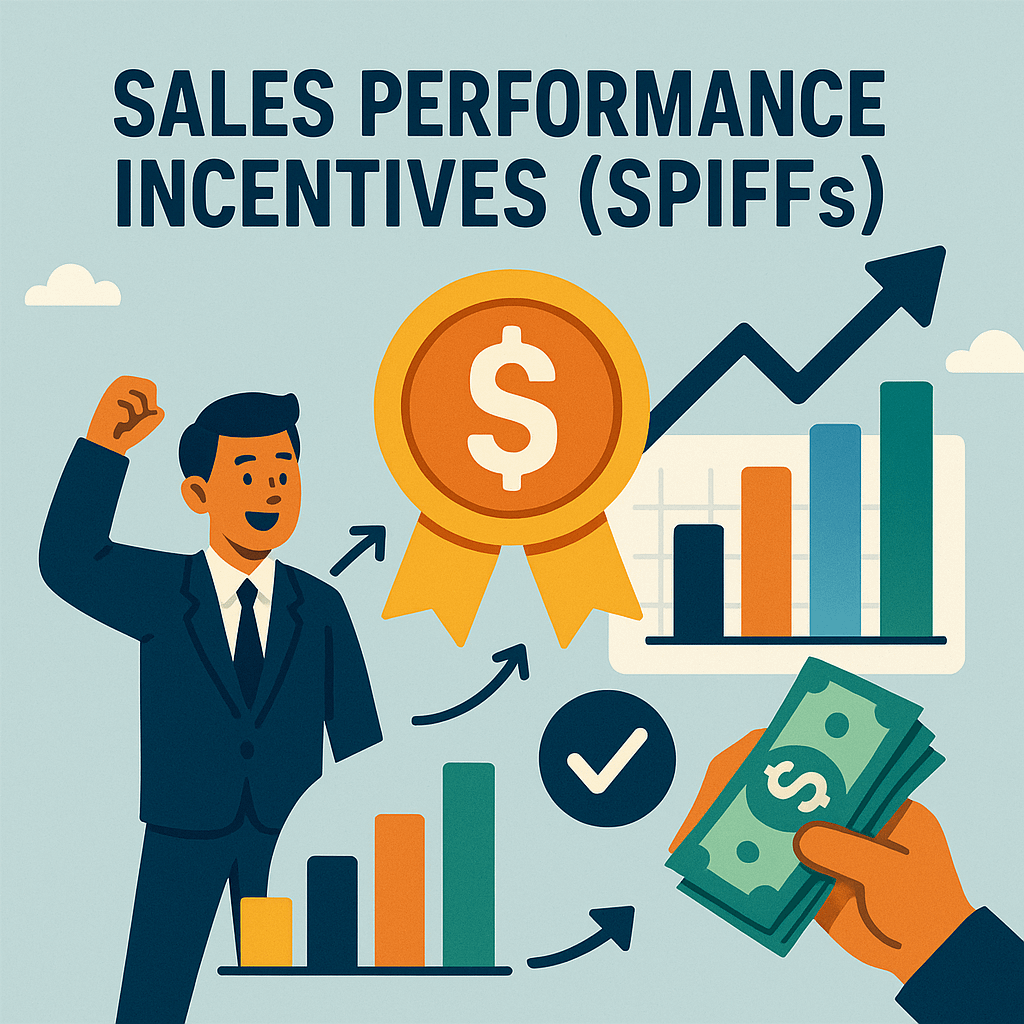
What it is: SPIFFs are targeted rewards used to quickly boost specific sales behaviors. These short-term bonuses encourage partners or reps to push a product, hit a goal, or perform a desired action within a defined timeframe.
Examples: A channel partner earns a $500 bonus for each successful upsell of a premium package during Q4. Another scenario might involve rewarding top performers weekly during a product launch blitz.
Who it's for: Channel sales teams, direct sellers, VARs, and onboarding reps.
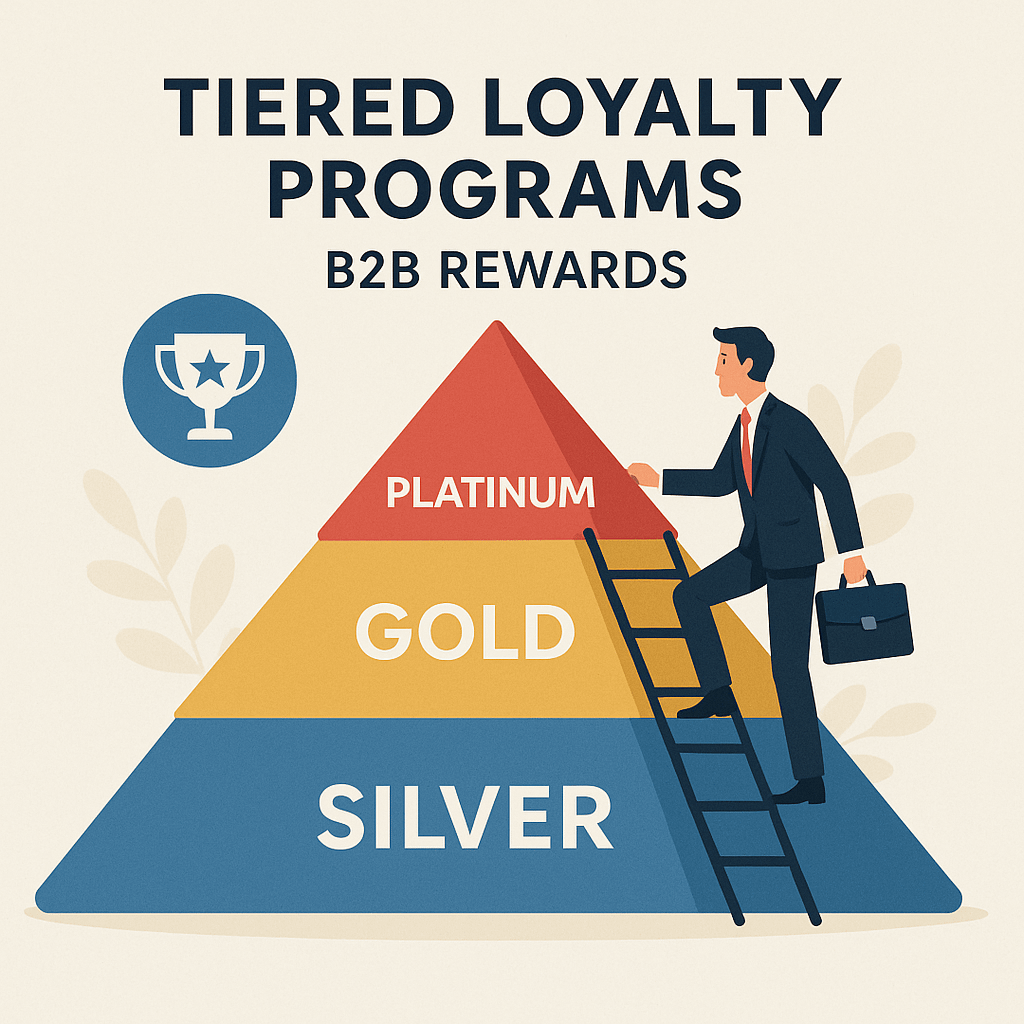
What it is: These are structured programs with ascending tiers like Bronze, Silver, and Gold that reflect a partner’s performance or engagement level. Each tier unlocks more valuable rewards, services, or visibility.
Examples: Gold-tier partners may gain early access to product releases, receive higher MDF budgets, or enjoy exclusive executive briefings. Tiers can be based on spend, deals closed, or length of relationship.
Who it's for: Distributors, integrators, top-performing resellers.
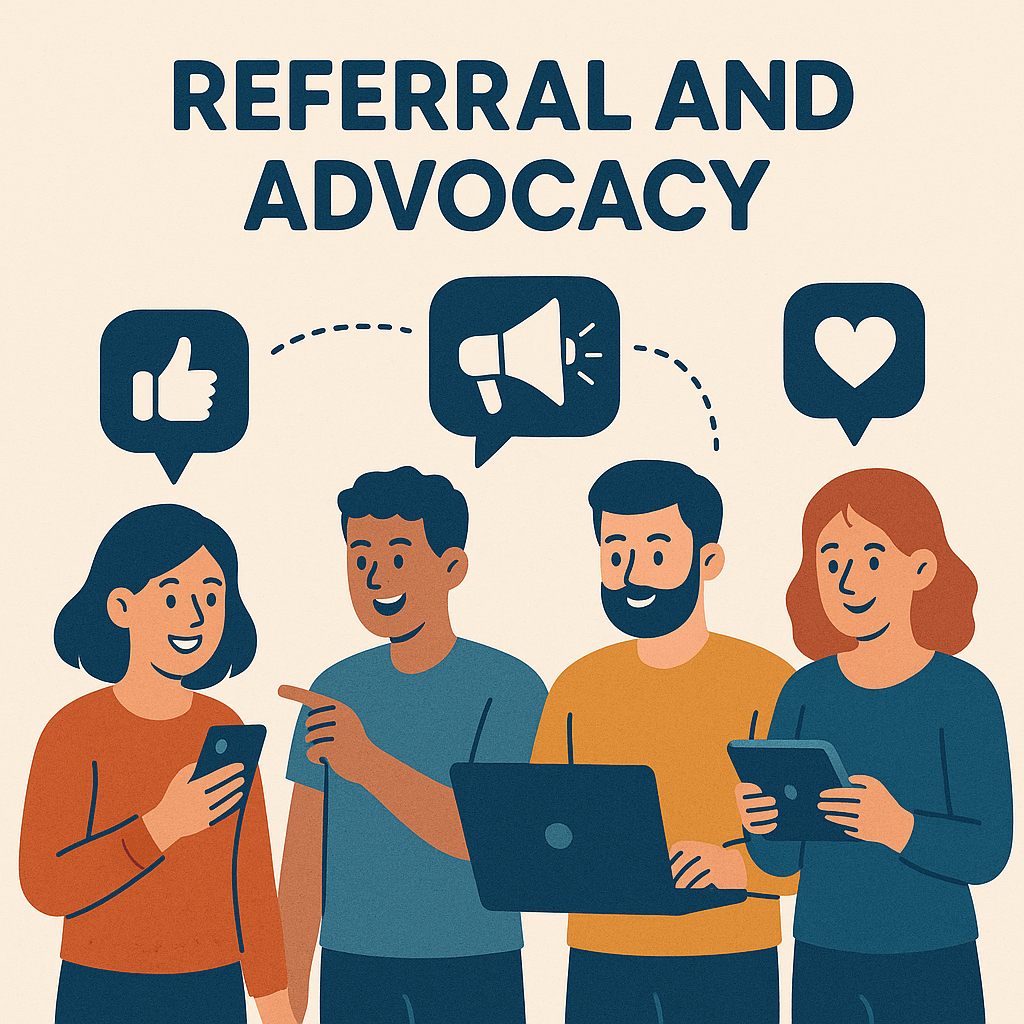
What it is: These programs reward partners or customers who actively refer new clients or provide public testimonials. Referrals help extend reach while advocacy builds brand credibility.
Examples: A satisfied partner refers another agency and earns a $1,000 credit upon contract signing. A customer who writes a review or joins a case study webinar receives a custom gift box.
Who it's for: Satisfied clients, consultants, and ecosystem influencers.

What it is: These are collaborative reward models where both parties benefit from shared success. They often include MDFs (Marketing Development Funds), learning incentives, and co-branded promotions.
Examples: A distributor earns additional funds for completing a certification and running a campaign using approved assets. Another variant involves quarterly bonus pools tied to co-marketing ROI.
Who it's for: OEMs, white-label partners, service providers.
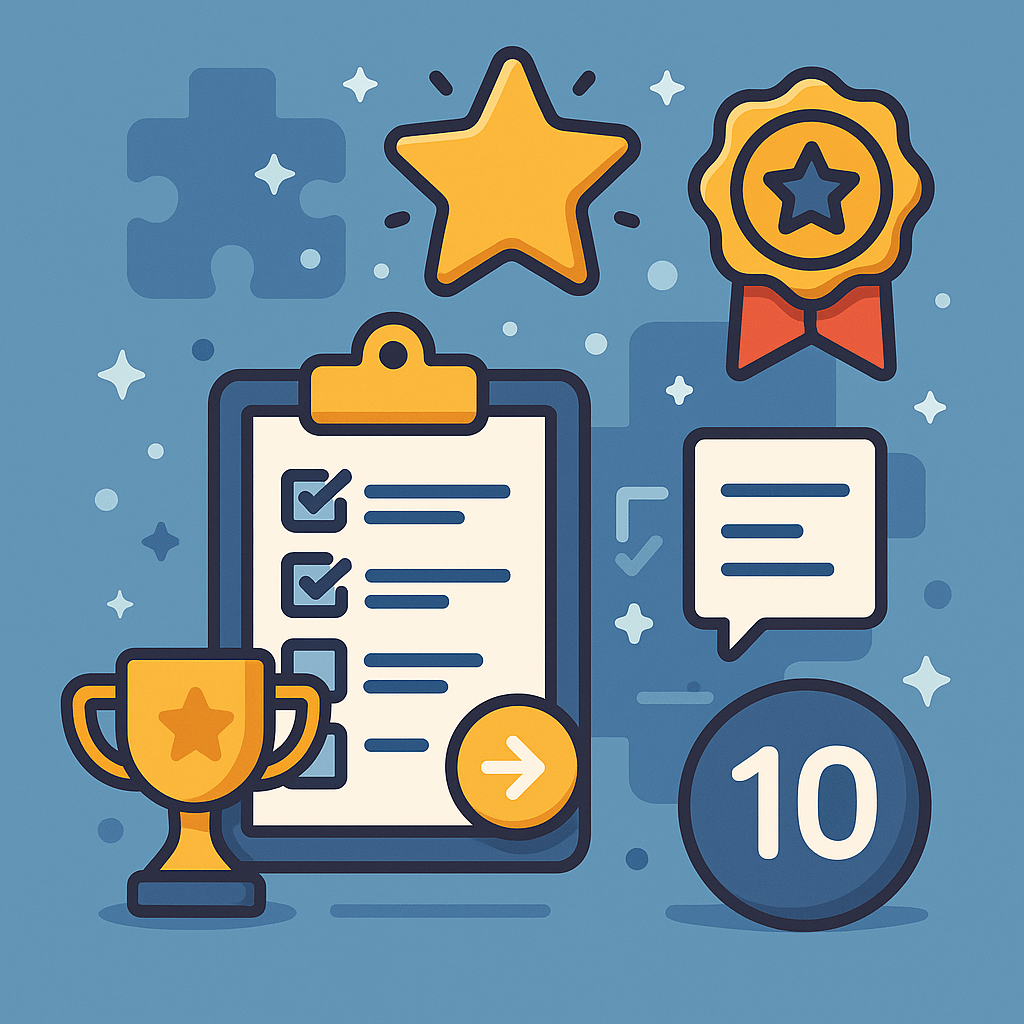
What it is: These techniques add interactivity and feedback loops to drive partner engagement. Partners earn points, badges, or unlocks for completing tasks, answering surveys, or joining challenges.
Examples: A leaderboard tracks training participation with winners receiving digital gift cards. Certain perks are only revealed after completing onboarding or product surveys.
Who it's for: Learning and development tracks, channel enablement, marketing engagement.
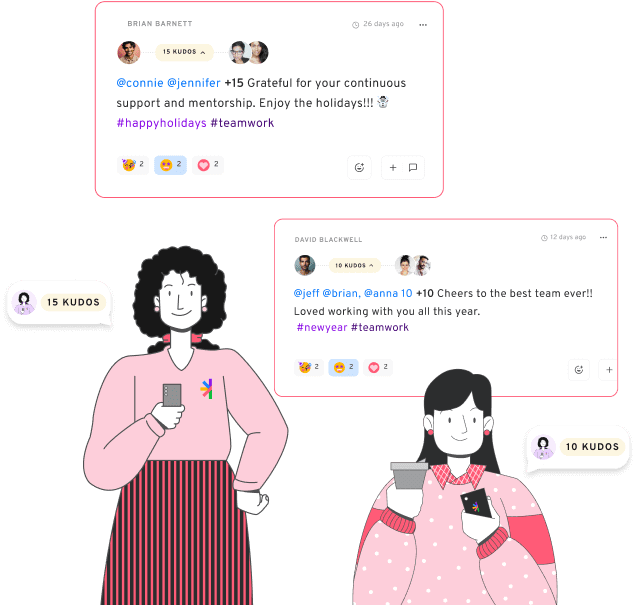
What it is: Encourage decentralized recognition between peers across departments or organizations. Often built on symbolic or social rewards, this method strengthens relationships.
Examples: An account manager sends kudos points to a shipping partner for exceptional fulfillment. Those points accumulate and convert to merch or perks in a custom shop.
Who it's for: Collaborative partner teams, vendors, remote workforces.
Start by identifying the specific behaviors or outcomes you want to encourage—such as increasing upsells, improving onboarding speed, or boosting engagement in product training. Define measurable KPIs to track your program’s impact.
With Stadium, you can configure these goals directly into your incentive rules. Whether it’s sales milestones, referral generation, or content engagement, each can trigger unique rewards automatically.
Not all partners are the same. Segment your audience based on tiers, industry, geography, or historical performance. This ensures tailored messaging, relevant rewards, and efficient use of resources.
Stadium’s partner management tools let you assign users to tiers (e.g., Silver, Gold, Platinum) with corresponding access levels and redemption rules. This keeps your incentives relevant, fair, and motivating.
Select incentive types that align with your goals—SPIFFs for short-term sales pushes, points for engagement, co-op rewards for marketing alignment, or experiential perks for VIP retention.
With Stadium, you can deploy multiple formats at once. Use points for training engagement, kudos for peer recognition, and physical gifts for top closers—all integrated into one experience.
Manual tracking doesn't scale. You need an incentive management platform that automates tracking, redemption, and reporting. This minimizes admin effort while maximizing accuracy.
Stadium integrates seamlessly with Slack, Microsoft Teams, and CRM systems. You can configure automated triggers (e.g., survey completion), assign budgets, and enforce redemption rules—all from your dashboard.
Even the best rewards program fails without strong communication. Announce your program through email, internal chat, or learning portals. Create guides, walkthroughs, and regular updates.
Stadium supports built-in notifications, announcement templates, and CRM integrations to help drive participation. Celebrate milestones publicly to create social proof and build momentum.
Use real-time data to evaluate performance. Are certain rewards driving better results? Are specific teams underperforming? Track participation, engagement rates, and redemption patterns.
Stadium’s analytics dashboard offers visualizations and detailed reports. Adjust incentive rules, tweak reward options, or A/B test reward tiers to continuously refine your strategy.
If you’re ready to elevate your B2B rewards and incentives strategy, Stadium offers a full-stack solution built for scale, automation, and global reach.
Custom Reward Catalogs: Tailor rewards by region, partner tier, or business goal.
Stadium Points System: Launch a branded currency for recognition, training, or sales incentives.
Slack/Teams Integration: Embed recognition into daily workflows for maximum adoption.
Real-Time Analytics: Monitor ROI, redemption behavior, and program impact with ease.
Budget and Redemption Controls: Keep your program compliant, transparent, and scalable.
Increase Revenue and Deal Size: By aligning incentives with high-value behaviors—such as upselling, contract renewals, or bulk orders—companies can drive larger deal sizes. Strategic rewards make it more enticing for partners to close higher-value deals.
Retain High-Performing Partners: Loyalty programs offer recognition and consistent value, which helps reduce churn. When partners feel valued and continually rewarded for performance, they’re less likely to be lured by competitors.
Encourage Participation: Gamified learning, rewards for surveys, and incentives for completing training modules enhance program engagement. This ensures better-informed partners who are more aligned with your offerings.
Behavioral Influence: Incentives can be directly tied to specific business goals—like promoting a new SKU, increasing cross-sell penetration, or driving event participation—making it easier to steer desired behaviors.
Deeper Data and Targeting: Every reward action generates insights. You can identify which partners are engaged, which incentives are underperforming, and how to refine offerings based on behavioral trends.
Competitive Advantage: In crowded markets, an attractive and easy-to-use rewards program can differentiate you from competitors who offer similar pricing or product features.
Build Brand Alignment: Offering eco-conscious rewards or culturally relevant incentives strengthens emotional alignment and builds long-term affinity beyond transactions.
Referral Growth: Encouraging customers or partners to refer others by offering clear, tiered rewards builds word-of-mouth acquisition and expands your brand’s reach organically.
Better ROI: Well-structured programs reduce reliance on high-cost acquisition tactics. Instead, they build loyalty and repeat business, often yielding stronger customer lifetime value (CLV).
Scalable Across Markets: Whether you’re operating in one region or globally, platforms like Stadium make it easy to scale rewards while retaining localization and personalization features.
B2B rewards target business entities like partners, resellers, or clients, focusing on strategic behaviors and long-term relationships. B2C rewards focus on consumer purchases and emotional loyalty, often through points or cashback offers.
Popular B2B rewards include SPIFFs (Sales Performance Incentives), tiered loyalty perks, co-op marketing funds, event invitations, branded swag, and points-based recognition that can be redeemed in curated shops.
Track participation rates, sales lift, average order value, partner retention, and cost per acquisition. Platforms like Stadium provide dashboards for real-time ROI insights and behavior analysis.
A SPIFF (Sales Performance Incentive Fund) is a short-term bonus offered to partners or sales reps for achieving specific sales goals, often tied to a product launch or promotion window.
Stadium enables companies to build flexible incentive programs with custom rewards, peer recognition tools, Slack/Teams integrations, and analytics to track success. You can automate campaigns and segment audiences—all from a single dashboard.
Hey there! Let’s wrap up our chat about B2B rewards and incentives, shall we?
In today’s competitive business landscape, acquiring new customers and fostering loyalty among your existing base is paramount for driving growth and increasing market share. Stadium’s innovative branded swag solutions offer a powerful strategy to achieve this through irresistible rewards and incentives.
By leveraging customer data, Stadium enables you to craft personalized incentives like branded gift cards, exclusive deals, or compelling swag experiences that make your customers feel truly valued and appreciated. Such rewards will aid in customer acquisition and deepen loyalty among your loyal fan base, encouraging them to become brand evangelists and driving repeat business. When executed with Stadium’s comprehensive platform, a well-designed rewards program can be a game-changer, boosting sales, increasing customer lifetime value, and solidifying your market position through the power of branded merchandise.
Unlock the full potential of rewards and incentives with Stadium’s branded swag solutions. Take action today and elevate your sales and marketing efforts while fostering deep customer connections that propel your business to new heights.